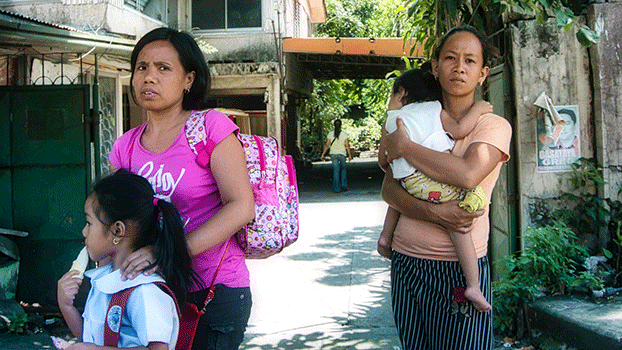
Feminist activists all over the world are raising their voices and taking action in a range of ways to fight for climate justice, women’s rights, and human rights. Their protests are loud and diverse. It is often feminists, indigenous activists, women of colour, or trans* people who are leading climate justice protests in their communities. They all share the same central concern: climate change must not be treated as an isolated crisis, but recognized as a symptom of our growing industrial societies and the way we treat our planet.
Nanna Birk works for the organization LIFE Bildung Umwelt Chancengleichheit e.V., where she works with international gender activists to promote gender justice in international climate change politics. Translated by Hunter Bolin and Joel Scott for Gegensatz Translation Collective.
Therefore, structural aspects of societies—including their gender relations—must be central to climate change policies. Women and men are not homogeneous groups. Nor is gender immutable or binary. Nevertheless, gender has a decisive influence on social roles and leads to persistent traditional hierarchical gender differences right around the world. These structural inequalities also result in different perceptions of climate change.. Of course, other social dimensions such as class, race, age, and disability also intersect with gender. All these factors lead to potential disadvantages or privileges for people and also affect their ability to adapt to the consequences of climate change.
Right around the world, women’s rights, their access to resources, power, and their own development opportunities are restricted. In climate policy, too, their voices have largely gone unheard until now. Persistent global injustices, patriarchal structures, the unequal distribution of care work, systematic barriers and the different needs of women and men lead to political, economic, and social inequalities between the sexes.
The impact of these inequalities is also visible in the fact that women are disproportionately affected by the negative effects of climate change. This is primarily true for those particularly marginalized women who have no access to public infrastructure or who live in areas that are more severely affected by climate change, such as coastal regions. These are usually people who have contributed the least to the climate crisis. Nevertheless, it is wrong to stereotype women in general as more vulnerable, since their vulnerability is manufactured by unequal gender relations in terms of the distribution of power, resources, and wealth.
A look at the vital area of agriculture makes this clear. Climate change related vulnerabilities depend on farming practices, seeds, access to land, water, agricultural equipment, fertilizers, credit, etc. But the access and knowledge pertaining to these things is not evenly distributed among women and men. Many small farmers are women. If climate change policies that rely only on improved farming technologies are implemented, this could further increase gender inequality. The existing gender relations also mean that crop failures, natural disasters, conflicts, diseases caused by climate change, water or energy shortages affect women and men differently. If climate politics does not take gender into account, existing inequalities could be further exacerbated and progress made towards a more just society reversed.
According to an ILO study from 2018, women and girls perform 12.5 billion hours of unpaid care work every day worldwide, which leads to massive economic inequalities. The climate crisis will make it more difficult to access food, water, and wood, and disease and illness will worsen. This in turn will greatly increase the amount of work required for these unpaid care activities, which will have a lop-sided negative impact on women’s time and adaptability.
If we look at the opportunities to participate in processes and decisions around climate change, women are globally underrepresented, and especially in the areas of energy and transport. As of 2015, only 12 percent of the world’s environmental ministries were headed by women. Women with local experience, such as indigenous groups often do not even receive information about how to get involved with climate change politics locally, even if they are officially entitled to do so. As a result, their perspectives and needs are often not taken into account. If sustainable decisions are to be made, those directly affected by climate change must become an integral part of decision-making processes concerning climate change.
However, gender differences go beyond the extent to which people are negatively affected by climate change. They are also reflected in the different preferences for climate change mitigation measures. What’s more, persistent ideals of femininity and masculinity shape social consumption habits like how we eat or the kinds of transport we use, which in turn has an impact on our individual carbon footprints.
When we talk about gender, the discussion is often centred around women. Of course, men also have particular vulnerabilities that need to be taken into account. But it is crucial that we go beyond the mere recognition of these gender differences and focus on the structural aspects in order to transform them.
If we are serious about climate and gender justice, we urgently need a new form of cooperation. This includes a fairer distribution of care work and of political, economic, and social power. It also includes recognizing feminist climate justice struggles. An intersectional feminist perspective can help to identify these and to create an ambitious and transformative climate change politics.